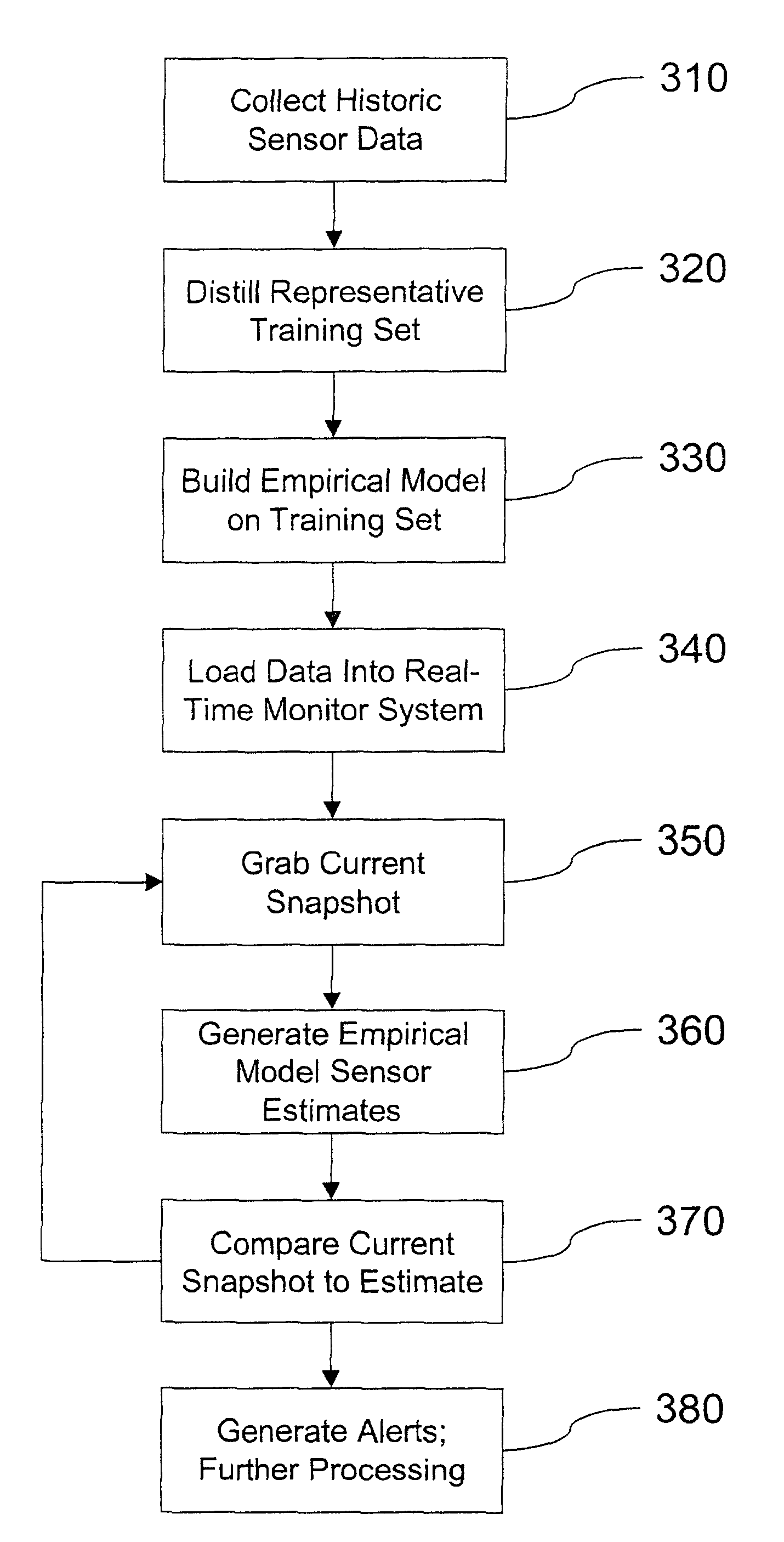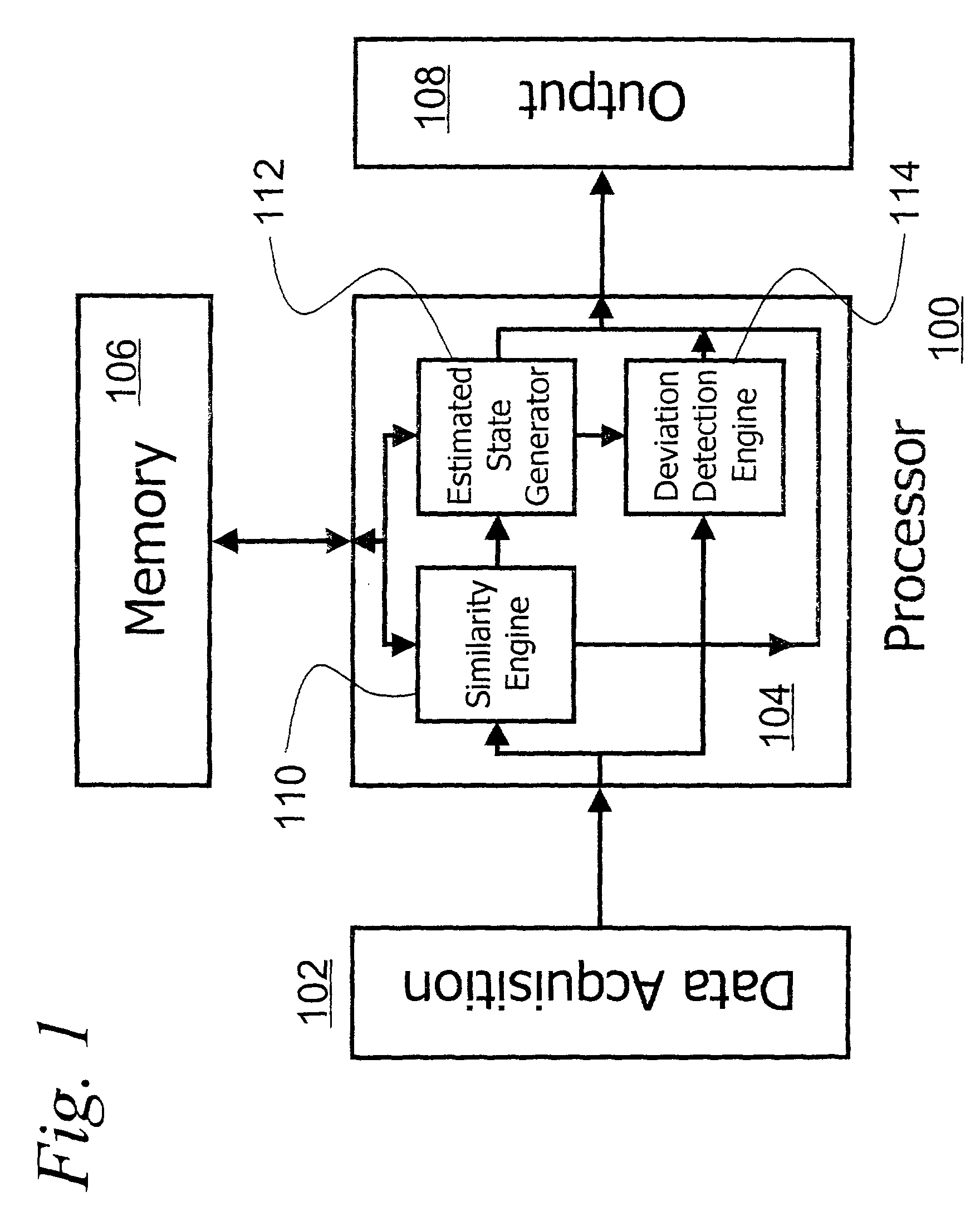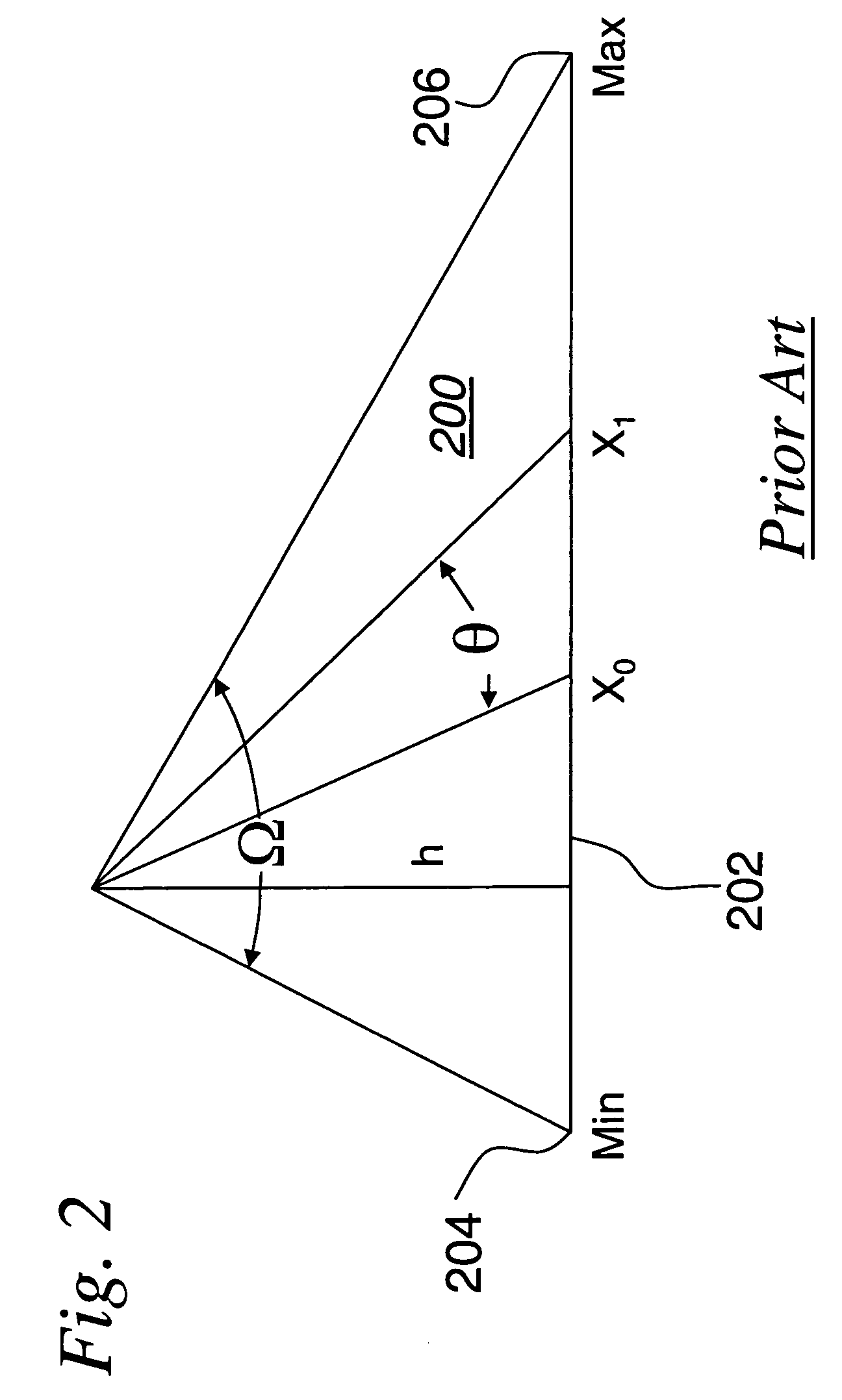System for extraction of representative data for training of adaptive process monitoring equipment
- Summary
- Abstract
- Description
- Claims
- Application Information
AI Technical Summary
Benefits of technology
Problems solved by technology
Method used
Image
Examples
Embodiment Construction
[0034]The present invention is a method system and program product for distilling a training set from a collection of data. According to the invention, for each sensor or parameter provided in the model, all collected snapshots are arranged in a sequence that orders the sensor of interest according to magnitude. The ordered snapshots are then chosen for inclusion in the final training set used as the basis for the empirical model, by segmenting the magnitude axis into equal-spaced segments, and identifying one snapshot for each segment. This is performed for each sensor. More specifically, the magnitude axis is divided into equal segments, and the snapshot with the magnitude for the sensor of interest that is closest to any segment divider value is included in the training set in its entirety. The training set selection can be done on processed or unprocessed data. The data is analyzed and the training set is selected by dividing the data, uniformly or non-uniformly, into as many di...
PUM
 Login to View More
Login to View More Abstract
Description
Claims
Application Information
 Login to View More
Login to View More - R&D
- Intellectual Property
- Life Sciences
- Materials
- Tech Scout
- Unparalleled Data Quality
- Higher Quality Content
- 60% Fewer Hallucinations
Browse by: Latest US Patents, China's latest patents, Technical Efficacy Thesaurus, Application Domain, Technology Topic, Popular Technical Reports.
© 2025 PatSnap. All rights reserved.Legal|Privacy policy|Modern Slavery Act Transparency Statement|Sitemap|About US| Contact US: help@patsnap.com



